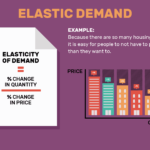Understanding Budget: A Key Tool for Financial Management
A budget is a financial plan that estimates income and expenditure over a specified period, serving as a crucial tool for managing finances in households, businesses, and governments. Whether for personal financial stability or business profitability, budgeting enables effective resource allocation, ensuring that financial goals are met and unexpected financial problems are mitigated.
Importance of a Budget:
Budgeting offers several key benefits, regardless of the context—personal, business, or governmental:
- Financial Control: A budget provides clarity on how much money is coming in and going out. It allows individuals and organizations to track their spending habits, ensuring that expenditures don’t exceed income.
- Goal Setting and Achievement: Budgets help in setting financial goals, such as saving for a major purchase or investment. They offer a structured approach to allocating funds towards reaching those objectives.
- Debt Management: Budgets can help individuals or businesses reduce debt by highlighting where money can be saved and used to pay off liabilities.
- Emergency Preparedness: By planning ahead and setting aside funds, a budget ensures that emergency situations (like unexpected expenses) don’t destabilize finances.
- Resource Allocation: For businesses and governments, budgets help prioritize resources toward the most critical areas, ensuring long-term sustainability and growth.
Types of Budgets:
Different types of budgets are used depending on the context and goals:
1. Personal Budget
A personal budget helps individuals or households manage their income, savings, and expenses. It typically involves tracking monthly income, categorizing expenses (e.g., rent, groceries, utilities), and setting aside savings for future needs or emergencies. Personal budgeting tools like spreadsheets, apps, and financial software can simplify this process.
2. Business Budget
A business budget outlines the expected revenue and expenses for a company over a certain period, usually annually. It helps businesses plan for growth, assess profitability, and ensure enough funds are available for operations, investments, and debt payments. Common types of business budgets include:
- Operating Budget: Focuses on day-to-day business operations and includes revenue, variable costs, and fixed expenses.
- Capital Budget: Plans for long-term investments in assets like equipment, infrastructure, or technology.
- Cash Flow Budget: Tracks inflows and outflows of cash to ensure the company can meet its financial obligations.
3. Government Budget
A government budget outlines how public funds will be used over a fiscal year, detailing planned spending on infrastructure, public services, education, defense, and more. Governments typically create two types of budgets:
- Revenue Budget: Details the expected income from taxes, fees, and other sources.
- Expenditure Budget: Details planned spending on different public programs, departments, and welfare initiatives.
Key Elements of a Budget:
Regardless of the type, every budget shares certain essential components:
- Income: This represents the money expected to come in during the budget period. For individuals, income includes salaries and wages, while for businesses, it includes revenue from sales and other operations.
- Expenses: These are the outgoing funds that must be paid for goods and services. Expenses can be divided into two categories:
- Fixed Expenses: Regular, unchanging payments such as rent, loan installments, or subscriptions.
- Variable Expenses: Fluctuating costs like groceries, utilities, or entertainment.
- Savings and Investments: A portion of the income should be allocated to savings or investments. This helps in building financial security or funding future goals.
- Surplus or Deficit: After income is subtracted from expenses, the remaining balance indicates a surplus (excess income) or deficit (excess expenses). The goal of budgeting is to maintain a healthy surplus or, in business contexts, reinvest it for growth.
How to Create an Effective Budget:
Creating a budget involves several steps:
- Define Your Financial Goals: Before drafting a budget, identify what you want to achieve—whether it’s saving for a major purchase, reducing debt, or ensuring business profitability.
- Track Income and Expenses: Gather data on all sources of income and expenses. This helps establish a realistic starting point for creating your budget.
- Categorize Expenses: Group expenses into fixed, variable, and discretionary categories, which will help in understanding where adjustments can be made.
- Adjust as Needed: If expenses exceed income, look for areas to cut back. Focus on variable or discretionary spending to balance the budget.
- Review Regularly: Budgets are dynamic and should be reviewed periodically to ensure they remain aligned with your financial goals and circumstances.
Conclusion:
A budget is more than just a financial plan—it’s a strategic tool for achieving financial security and long-term success. Whether you are an individual looking to save money, a business planning for growth, or a government managing public funds, budgeting helps ensure that resources are used effectively.










